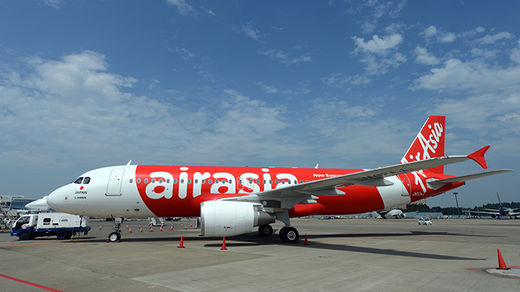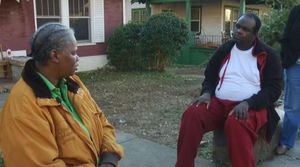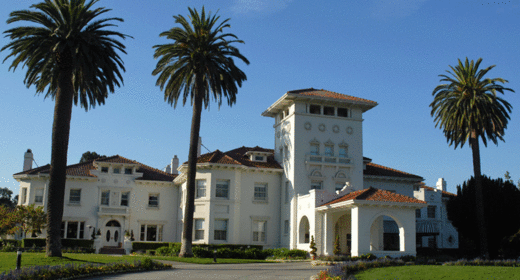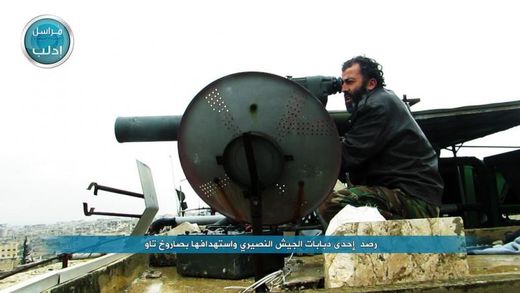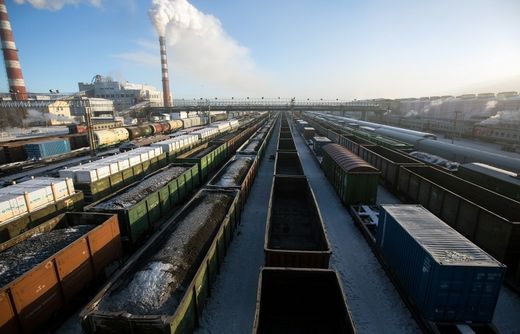
© EPA
Man Haron Monis was no stranger to the Australian media and general public prior to the events at Martin Place. Was the public being primed to accept Monis as some kind of terrorist by virtue of his well known rantings and high-profile court appearances?
From the outset of the police siege in central Sydney on December 15 - 16, the response of the federal and state governments was based on a lie: that hostage-taking by a lone gunman in the Lindt café constituted a national "terrorism" crisis justifying the activation of the entire counterterrorism apparatus and the deployment of thousands of police, not only in Sydney, but other major cities around Australia.
The lie serves a definite political purpose. On December 17, Prime Minister Tony Abbott announced a joint review with the state government of New South Wales (NSW), not to investigate what had taken place, but to focus entirely on the hostage-taker Man Haron Monis as the pretext for deeper inroads into basic democratic and social rights. The incident is also being exploited to justify Australian involvement in Washington's predatory new "war on terror" in the Middle East against Islamic State of Iraq and Syria (ISIS) militias.
However, the official story of the Sydney siege is riddled with discrepancies and contradictions and has provoked widespread suspicion and questioning. In response, Abbott sought to maintain the atmosphere of fear and hysteria, declaring on Tuesday that there had been "a heightened level of terrorist chatter." The tragic death of two innocent hostages has been mercilessly exploited to construct an image of a nation under siege coming together and thereby to render any criticism of the police and government illegitimate.
A massive cover-up is underway to whitewash the actions of the governments, the police and intelligence agencies. The extraordinary regime of censorship imposed during the 16-hour standoff at the Lindt café has continued. There is no official account, even in outline, of what took place during the siege or its tragic denouement. In the early hours of December 16, heavily-armed paramilitary police stormed the café, leaving Monis and two hostages - Katrina Dawson, a barrister and mother of three, and café manager Tori Johnson - dead.
Nor is there likely to be for weeks, if not months. No date has been set for the coronial inquiry which has been tasked with examining the events. Staff at the NSW State Coroners Court told the World Socialist Web Site they had been instructed to say nothing to the media and to refer all inquiries to the Department of Justice where the media officer declared that no information would be released until the inquest. Likewise, the police media unit refused to answer any detailed questions, confirming only that a Critical Incident Investigation was underway, for which no time frame had been set.
A mentally unstable individual, not a terrorist
The first glaring hole in the claims that Australia was under siege from a terrorist attack is the character of the hostage taker, Monis, who had no connection to ISIS, Al Qaeda or any other Islamist organisation. The 50-year-old unemployed Iranian refugee was well-known to police and the Australian Security Intelligence Organisation (ASIO) and had a long history of erratic behaviour, mental instability and stunts aimed at gaining publicity for his grievances.
Monis immediately came to the attention of ASIO when he arrived in Australia in 1996 claiming to have worked in the Ministry of Intelligence and Security in Tehran and that his life was endangered. Iranian authorities, however, alleged that he was the manager of a travel agency wanted for fraud and sought his extradition. They were turned down and he was granted political asylum in Australia in 2000.
Monis styled himself as a Shiite cleric dressing in the garb of an ayatollah. He was clearly distressed and angered by the US invasions of Afghanistan and Iraq and Australia's military involvement, but responded in his own eccentric manner, firing off letters appealing to prime ministers, the Pope, the US president and anyone else he thought might listen.
He came to national attention over letters that he wrote between 2007 and 2009 to the families of soldiers killed in Afghanistan, protesting the war but also insensitively blaming the soldiers for the crimes of the US and Australian governments. Monis was charged in 2009 with sending "offensive" material through the post, but challenged the validity of the law. The case went all the way to the High Court where a three-three split in February 2013 in effect upheld the law. In September 2013, he agreed to a deal in which he pled guilty in the charge in return for a penalty of 300 hours of community service.
Monis was quickly the focus of further police action. In October 2013, he and his partner Anastasia Droudis were charged over the murder of his ex-wife who had been killed in April. He was denied bail and jailed for six weeks during which time he alleges he was tortured.
His lawyer Manny Conditsis told BBC Radio 4: "What he said happened is that he was placed into a cell which had a concrete bed, they removed the mattress, there was excrement thrown around the walls and the floor - not by inmates, according to him, but by prison guards. He was then forced to stand in and about the excrement and every time he tried to sit down over a period of 24 hours he would be bashed."
Asked if he believed his client, Conditsis replied: "Yes I did." Monis and Droudis were finally granted bail in December 2013 on the basis that the evidence against them was "weak" and "circumstantial."
Four months later, in April this year, Monis was charged with the first of a series of sexual assault offenses dating back more than a decade to the days when he had gone into business in Sydney as a spiritual healer. In October he was charged with additional offences, including 22 counts of aggravated sexual assault and 14 counts of aggravated indecent assault related to six other women.
These charges will not now be tested in court. Their timing, however, does suggest that Monis was being targeted by police. In his comments, Conditsis said: "The person that did what he did in relation to this siege is not the person that I knew about a year ago. Something has happened to cause him to be unhinged." Faced with the prospect of being jailed, the lawyer said, "he may well have thought that his back was against the wall and he had nothing to lose."
Monis " not on ASIO's watch list "
In the immediate aftermath of the café siege, Prime Minister Abbott told the media that Monis had been on ASIO's watch list between 2007 and 2009 but had dropped off. The claim lacks any credibility. Over the past decade as part of the "war on terror," successive governments - Liberal and Labor - have vastly expanded the security apparatus and extended their powers. Counter-terrorism expert Greg Barton told the Sydney Morning Herald there was no such thing as a single watch list but rather "concentric circles" of monitoring and surveillance, depending on priorities.
Abbott's statement that there had in effect been "an intelligence failure" set the stage for his announcement of the review that will further strengthen ASIO. The claim is also aimed at diverting attention from questions about relations between Monis and the police and intelligence agencies, which have a long record of entrapping unstable individuals to act as informers or provocateurs.
Monis had extensive contact with police and intelligence agencies through letters and as a result of police interviews related to the charges against him. He was on bail and had to report regularly to police. Among the posts on his own web site is correspondence in 2007 with ASIO director-general Paul O'Sullivan in which Monis reported that he had been "
a witness for indirectly instructing terrorists" and
confirmed that O'Sullivan had replied.
What use ASIO made of the information and the informer is not known, but the evidence will certainly be buried in the official review. Monis's death ensures that he will never provide his account of his relations with ASIO and police. Nor will Monis be able to explain what drove him to Martin Place on December 15 or what his plans were.
Two facts further undermine Abbott's claim that Monis was not being closely watched by ASIO and police. On November 17, he publicly announced on his web site that he had made a conversion from Shiite to Sunni Islam and pledged his allegiance to the "Caliph" - a reference to the various Sunni extremist groups, including ISIS whose goal is to restore the caliphate.
Two days before the siege an anonymous caller rang the national security hotline urging the security services to "take a look at this man's website." According to Abbott, the tip was "really followed up" but "didn't expose any threats of direct violence by the Martin Place murderer." Following the siege, the material from his web site has all been seized on as "proof" that Monis was a terrorist acting on behalf of ISIS, yet by Abbott's account he posed no threat of direct violence. It was far more likely that ASIO and the police were well aware of the warning signs, were monitoring Monis's activities, and may even have had a hand in manipulating him for their own purposes.
The Martin Place "terrorist" plot
On the afternoon of December 15, Murdoch's tabloid, the Daily Telegraph, published a special edition with the screaming front-page headline "Death Cult CBD attack." The only indication of any "terrorist" involvement was a black flag with an Arabic inscription in white held up against the window of the Lindt café. It was not the ISIS flag, but was a common profession of Islamic faith, which is found on the Saudi flag among many other places.
Despite all the details about Monis that have emerged to the contrary, the Murdoch media in Australia and around the world has continued a relentless campaign to insist that Monis was a terrorist acting on behalf of ISIS. In countless comments and editorials, Murdoch's hired hacks refer back to lurid allegations stemming from the largest-ever "anti-terror" raids in September that an ISIS sympathiser had been instructed by phone to seize and "behead" a random individual in Martin Place. Every aspect of the claim was highly suspect - the word "behead" was not used in the phone call, a much-publicised sword was found to be plastic and just one person was charged with a vague, terrorism-related offence.
If there was any element of truth in the September allegations, Monis certainly did not match the stereotype of a hardened ISIS recruit prepared to butcher people in public. He had no known ties to ISIS or any other Sunni extremist organisation. Prior to his bizarre conversion, he paraded around as a Shiite cleric and thus would have been regarded by ISIS as a heretic. Monis had never been accused of a terrorist related offence. He was a troubled and erratic individual with a long record of extravagant protest gestures aimed at seeking publicity for his grievances.
Martin Place is in the heart of Sydney's central business district, the location of bank headquarters, including the Reserve Bank of Australia, the US Consulate, major legal firms and the Channel Seven television network. It is one of the most monitored places in Australia and where supposedly ISIS had ordered a beheading, yet Monis was able to stroll into the area carrying a sports bag with shotgun.
Monis had previously carried out protests outside the Channel Seven studios against the network's 2009 program vilifying the "fake sheik" over his letters to the families of Australian soldiers. Channel Seven beefed up its security measures and one of its surveillance cameras caught Monis pacing outside its building at 8.30 a.m. on December 15. A government source told the Daily Telegraph that Monis "may have initially set his sights on Channel Seven during their live morning broadcast."
For the next hour and a quarter, Monis appears to have been a man with a shotgun and a flag but no worked out plan of action. No explanation has been given as to why the many surveillance cameras did not identify him, particularly given his past protests. He was not approached by police. Contrary to some newspaper accounts, Monis did not "storm" the Lindt café - a popular haunt for lawyers. Reportedly he even chatted to one of his own lawyers. At 9.45 a.m., Monis took out the shotgun, locked the doors and warned off a woman seeking entry, who alerted police. He ordered several of those present to display his flag in the window.
Counter-terrorism operation initiated
As early as 10 a.m., the cabinet national security committee had met and, in conjunction with the NSW state government and police, set in motion a massive counter-terrorism operation. Key governments around the world were briefed. Central Sydney was flooded with police and emergency services. The blocks surrounding the café were cleared and sealed off. Snipers were placed overlooking the café. Heavily armed paramilitary police were stationed immediately outside the café.
Buildings were evacuated or sealed off, including some several kilometres from Martin Place. The Opera House was evacuated and surrounded by barricades on the basis of a false report about a suspicious package. The police presence was heightened in Sydney suburbs and other major Australian cities. The Queensland police commissioner in Brisbane, a thousand kilometres to the north, ordered all available police onto the streets. As far away as New York, police ramped up security around key landmarks, including the Australian consulate.
No explanation has been given for this extraordinary mobilisation. When Abbott gave his first press conference at about 11.30 a.m., he did not say that a terrorist incident was underway. Rather he explained that NSW police and Australian Federal Police were "responding to a reported hostage-taking incident in Martin Place." The response, and indeed the fact that Abbott was making a statement, was out of all proportion to "a hostage taking incident," such as an armed robbery gone wrong.
By contrast, the reaction to a siege on Christmas Day, in which an armed man barricaded himself in a unit on the Gold Coast in southern Queensland, was very low key. He eventually surrendered to police. Inspector Bruce Kuhn praised police negotiators for the peaceful outcome, adding that the man had "a few personal matters that have exacerbated his behaviour, and we'd like to think that he'll get all the assistance he can." Needless to say Abbott made no comment and the media treated the incident as a standard police matter.
Abbott's comment on the morning of December 15 set the pattern for subsequent official statements. No information was provided about the hostage-taker or the hostages. The very lack of information fed uncertainty and fear that was magnified by the media which quickly turned their entire focus to the Sydney siege. By saying nothing, Abbott ensured an atmosphere of wartime emergency - of a nation under attack. If at any time over the next 16 hours, Abbott had announced that, awful though it was, the incident involved just one disturbed gunman in a Sydney café, the sense of crisis would have been immediately punctured. That was not what the government wanted.
What happened inside the café is still the subject of official censorship. On December 15, the police and government authorities went to extraordinary lengths to ensure complete control of media coverage. Reporters and TV cameras were forced behind barriers out of the line of sight of the café. Police instructed Channel Seven, whose studio overlooked the café, to turn off a live feed from their cameras. Media outlets that received messages containing Monis's demands were asked not to publish them - all complied. The families of the hostages were gathered together supposedly for support, but told nothing and instructed to inform police of any contact with their loved ones.
No negotiations
In a press conference at about 6.30 p.m., NSW Deputy Police Commissioner Catherine Burn confirmed that "we have been in contact [with the gunman] throughout the day in various forms" but insisted that she would not "talk about some of the tactics and information." Burn, who is in charge of special operations, gave the first confirmation that counter-terrorism protocols, coded-named Task Force Pioneer, had been initiated in response to the siege. She stressed that authorities wanted to "resolve this peacefully" and that the "priority" was the safety of the hostages. Burn assured the media that the police were using "a very, very well tested system of negotiation" that was "world class."
None of these statements was true. A decision had been made at the highest levels very early in the siege that there would be no serious negotiation with Monis. How quickly he was identified as the hostage taker is not known. But by 1.30 p.m. at the very latest, NSW police, assisted by Muslim leaders, had ascertained his identity. His demands were also known but suppressed: he wanted an ISIS flag, recognition that his siege was an ISIS "terrorist" attack, and an on-air conversation with Abbott.
Significantly, in his two media conferences, Abbott, who has relentlessly traded on the "war on terror" in the past, deliberately avoided any reference to terrorism or to ISIS. Speaking a 1 p.m., he referred to the "disturbing incident" and noted there were some indications that it could be "politically motivated." Having helped generated an atmosphere of national crisis, he absurdly urged "all Australians today to go about their business as usual."

© Unknown
Australian PM Tony "I'll shirtfront Putin" Abbott probably not in on the ASIO stage that was being set. But oh does he take advantage of it later.
Abbott's behaviour on the day underscores what he later confirmed - there was no intention of making any concessions to Monis's demands. In announcing the review on December 17, Abbott revealed that he had been aware that Monis wanted to speak to him but had not done so on "the advice that we got from police." However, the comment, if true, raises more questions than it answers. Why did the police advise against any attempt to reach a deal on Monis's limited demands to end the standoff peacefully? He had injured no one and the siege had more the character of a publicity stunt for which he was notorious. And why did the prime minister simply accept the advice?
Other options were also ruled out. In the wake of the siege, spokesman for the Islamic Friendship Association Keysar Trad told the media that he and other Muslim leaders had offered to negotiate with the gunman, but were rebuffed. Trad, who knew Monis, told the WSWS that police had withheld his name until after he was killed. "If I had known who he was, I could have talked him down into surrendering," Trad said.
The decision not to negotiate with Monis and to black out his demands ensured that the situation inside the café became extremely tense. In effect, given that other avenues to defuse the standoff had been ruled out, it had been decided at the top levels of government and the state that at some point the café would have to be stormed.
The desperation of the hostages was evident in a call made by Selina Win Pe to the Daily Telegraph, reported after the siege was over: "He [Abbott] clearly doesn't give a shit because he hasn't called us since 9.45 this morning ... Help us. Help to get Tony Abbott to call this gentleman ... to send the fricking Islamic flag."
At 3.35 p.m., three hostages fled from the café, were corralled by police and taken away. At 5 p.m., two more hostages managed to escape. This was the prelude to the media conference by NSW Deputy Police Commissioner Burn reassuring the world that everything was being done to ensure a peaceful resolution to the siege. "It may take a bit of time," she said, "but that is our approach."
Police storm the Lindt café
At 1 a.m., on December 16, the police embargo on naming Monis was lifted. After other media began publishing, the Guardian contacted NSW police for advice and was informed that "there are no longer any operational reasons not to report his name." No reason was given for the about face - in the middle of the night - but it was a sign of what was to come. The suppression of Monis's name, supposedly for the safety of the hostages, no longer applied.
An hour later, paramilitary police stormed the café in circumstances that have not been officially explained. Every aspect of the media accounts of this operation should be treated with suspicion as virtually all of them rely on unnamed hostages or police sources. In line with police requests, those hostages who have spoken publicly have said nothing about the events inside the Lindt café.
© Unknown
Armed police who probably had 'shoot to kill orders'. Can't leave any any loose ends now can we?
The comments of the father of one of the hostages, Joel Herat, to the
Sydney Morning Herald are an exception. According to that account, shortly after 2 p.m. Joel and another hostage Jarrod Hoffman decided to break down a door after Monis appeared to be increasingly agitated. As he ran out with four other hostages, Joel Herat heard what he thought was a shot - logged by outside reporters at 2.03 a.m. Seven minutes later at 2.10 a.m., another bang was heard and police stormed the café, throwing flash bang grenades and firing.
The siege was over in minutes and paramedics rushed inside. Monis and two hostages - Katrina Dawson and Tori Johnson - were dying or dead. Three of the six other hostages had sustained gunshot wounds. Who fired the fatal shots remains a closely guarded secret. The media officer for the Department of Justice told the WSWS that the three autopsies had been carried out, but that the results would not be released until the inquest. Unsubstantiated media reports claim Monis shot Johnson as he tried to seize the shotgun and that Dawson died protecting her pregnant friend and colleague, Julie Taylor.
It is not surprising that Monis did not survive. The last thing that the upper echelons of government, the police and security services wanted was a high-profile trial that Monis would use to vent his grievances, give his account of what happened, and possibly reveal embarrassing details of his relations with ASIO and the police.
The massive counter-terrorism operation exposed the extent of the police state measures that have been systematically built up since 9/11 under the pretext of the "war on terror." While the military were undoubtedly placed on alert, soldiers were not called in because they were not needed. The militarisation of the police forces was evident in the presence of heavily-armed, black-clad paramilitary police fitted with night-vision goggles, who resemble and function in every way as army special forces troops.
Particular note should be taken of the role of the media, which throughout the 16 hours functioned in lockstep with the security forces. Just as independent reporting of US-led wars ended with the embedding of journalists with the military, so those covering the Sydney siege took their orders from the police on what could or could not be published. In the aftermath of the siege, there has been no serious criticism or questioning of the actions of the police and governments. The establishment media has all lined up with the agenda now being advanced of more police powers and a greater commitment to the US war drive in the Middle East and elsewhere in the world.
The sharpest of warnings should be drawn. State and federal governments, with the full backing of the opposition Labor Party and the Greens, exploited the Sydney siege as a giant dress rehearsal for the type of police-state measures that will be imposed in the future, in time of war or social upheaval. Above all, such operations will be directed against the working class.
This entry passed through the Full-Text RSS service - if this is your content and you're reading it on someone else's site, please read the FAQ at http://fivefilters.org/content-only/faq.php#publishers.
